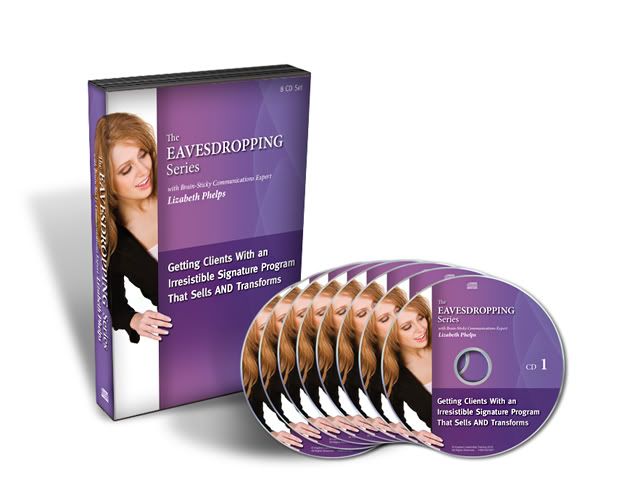 In my new business incarnation, I use terms like ”change the world,” “mission” and
In my new business incarnation, I use terms like ”change the world,” “mission” and
“leader.” A colleague of mine, who’s been in business for years, told me she wants
to feel that she has a BIG PURPOSE, but her specialty doesn’t seem to be evoking it.
She does very helpful things for her target market, but she’s not sure it’s going to
change the world or make her a leader. Now, she hasn’t worked with me, and
that’s exactly what I can do with her, but because I know she’s not alone, I thought
I would share some direction about this.
Before we go further, however, let’s get this out of the way: if you are an expert on
earth at this time, chances are very good that you are here with a bigger mission
than you are now realizing. Millions are waking up to a powerful call to impact. If
you know that (as she does) but just can’t “get at the itch”—relax, it’s going to come.
If you don’t know it at all and you’re very happy doing just what you’re doing, no
world-changing needed, then–at least for now–this whole idea isn’t for you.
However, you could be attracting far more business with just a slight change
in perspective. (I’ll write more about that in an upcoming post.)
If you’re like my colleague and can feel it “in there somewhere,” don’t be scared by
the idea of “changing the world” and being a “leader.” They’re part of your new job
description and with help, they will feel entirely natural (and destined) for you. I
want to help you see that the whole process is akin to moving from the shore into
tepid water, rather than skydiving off Mt.Kilimanjaro.
The fact is, there is only one thing standing between you and changing the world
as a leader of change. Only one thing that makes “those who know and are doing it”
different from you, and that is: a passionate belief.
There is something you believe fiercely that you are simply not bringing to your
business. It’s not shaping your “Store Front” (business identity), or reflected or
discussed in your programs/information products/speeches–and it’s not pivotal
in your marketing.
That’s it. No big mystery. No huge hurdle. If you aren’t “feeling it”—it’s because
you’re not feeling a passionate belief. Which could mean you’re not feeling a lot of
anything—maybe your “winning formula” in life has been to be highly intellectual
and not feel. It does require feeling to change the world, for certain. And a
passionate belief is what will get you feeling. It is then woven into absolutely
everything you do as a business owner.
You see, changing the world doesn’t have to mean that you “have a dream” that
literally touches every person on the globe—though, aspire for that, I say! And
being a leader doesn’t have to mean standing on a platform that millions can see—
though…! It means that you have a belief you cannot contain inside your own
skin and you know it will solve a problem.
You have it. I know you have it. For years, I have worked with countless visionary
entrepreneurs (coaches, consultants, wellness practitioners, speakers, authors),
and in our work,every single one of them excavates a passionate belief—their
leadership message. You can, too. Indeed, it is time.
Now, I’d be remiss if I didn’t point out that a passionate belief is all well and good,
but without strong internal conditioning, it will fall limp. A leader must call
herself to very high personal standards to actually lead and effect change. But that’s
for another time.
Right now—just live and breathe this question: What do I believe passionately?
Join me on a very special call Feb 23–A Time to Lead: Do You Dare? Read more
here.







 I am also pleased to see that they have a target market!
I am also pleased to see that they have a target market!
